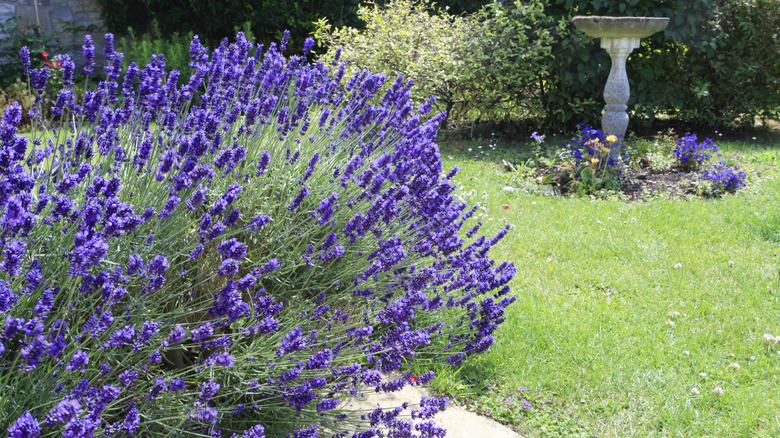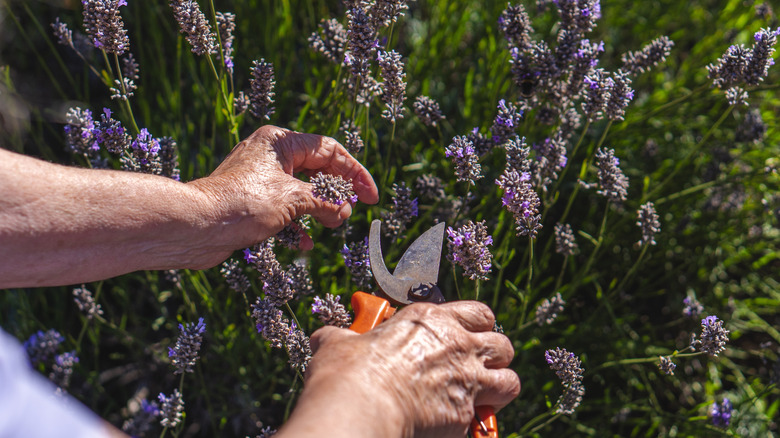The Best Time Of Year To Deadhead Lavender For Nonstop Blooms
Knowing how to grow lavender isn't just about growing the most flowers. It also includes cutting back the plants when it is necessary. Deadheading lavender is a practical way to encourage repeat blooming and keep your plant thriving well into the season. The best time to deadhead lavender is immediately after the first flush of flowers fade, typically in late spring to early summer, depending on your growing zone. Removing spent blooms helps redirect the plant's energy toward producing new flowers instead of setting seed.
English lavender (Lavandula angustifolia) is especially responsive to deadheading. This hardy variety often rewards gardeners with a second round of blooms if it's trimmed lightly right after the first flowers are spent. Simply snip off the faded flower stems just above the foliage and you might just be able to enjoy more blooms as the season progresses.
Lavender thrives in USDA Zones 5 through 10 and enjoys hot, dry conditions. But even in cooler zones, timely deadheading can help extend its blooming season. While in colder climates you may only get one strong bloom, you can often be rewarded with a second sporadic flowering before the weather cools if you're attentive to deadheading at the right time. And, for gardeners whose lavender isn't producing a lot of flowers, there are some foolproof ways to encourage more blooms, like the aforementioned deadheading, correct watering, and providing your plants with enough sunlight.
Tips for deadheading lavender the right way
To deadhead lavender effectively, take clean pruning shears or garden snips, follow each flower stem down to its base, and cut just above the first set of healthy leaves. This also helps preserve the shape of the plant while encouraging new growth. Avoid cutting too far down into the woody section, especially on older plants, as lavender doesn't regenerate well from older wood, and you'll end up with bare and unsightly woody branches.
As a general guide, you can deadhead your lavender as often as needed during summer, as long as you use a light touch and only remove the spent flower stems. After the second round of blooms fade, resist the urge to cut back your plants, as lavender needs time to harden off before winter, at least 4 weeks before a hard frost. Save any major shaping for early spring, when new green shoots begin to emerge at the base. This is when you will be able to see if there is any winter damage that will need to be removed. Always remember not to cut back more than one-third of the growth.
Along with a good deadheading schedule, lavender needs good airflow and full sun daily to grow its best. Although it may feel like you are giving it some tough love, avoid overwatering and don't pamper it with rich soil. This Mediterranean herb prefers dry, sandy soil that has excellent drainage and a bit of what feels like neglect. Once you have your lavender growing happily, you'll want to know the surefire way to tell if it's ready to harvest.

